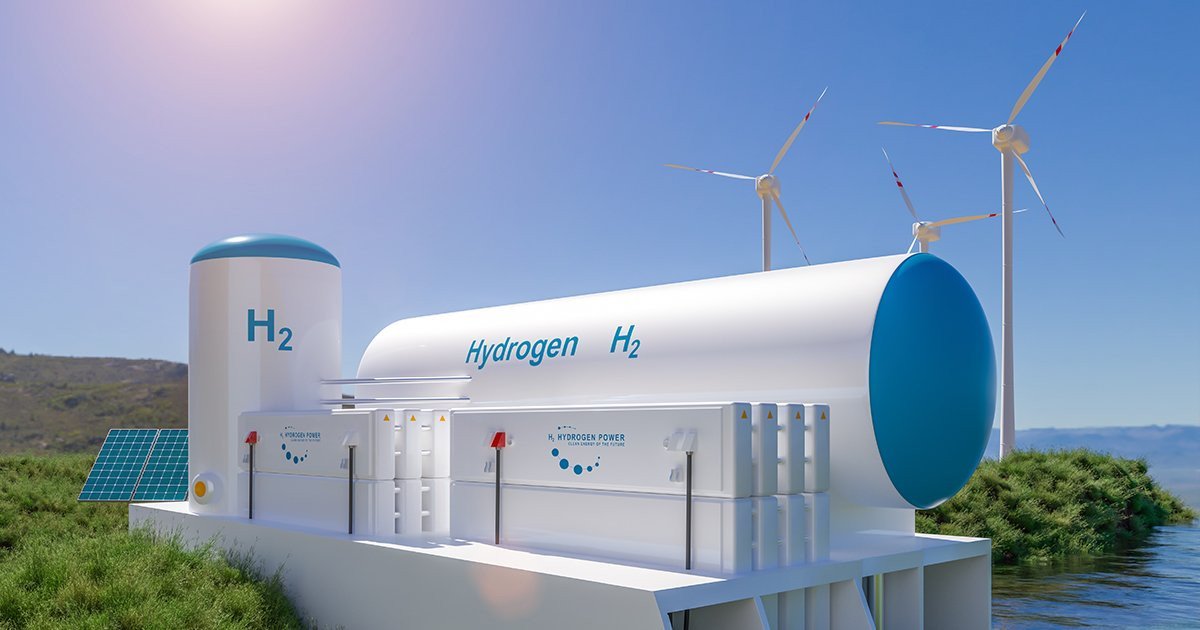Green hydrogen ETFs continue to garner attention, as new climate-change disclosures ripple across regulatory bodies worldwide. Imagine a world where cars, ships, and aeroplanes run on water instead of petroleum. What natural gas did to travel costs, green hydrogen can do to travel costs while releasing zero carbon.
The only residue of hydrogen fuel is water vapour, which is reusable. Emerging developments in the hydrogen sector have placed green energy stocks in the spotlight. The research is ongoing in full swing to make water fuel that is sustainable and can replace fossil fuel in industries, like transportation, that are difficult to decarbonize.
Best Green Hydrogen ETFs
Hydrogen is a light, storable, energy-dense chemical that is available in abundance. However, it is not available in gaseous form. Scientists have come up with several processes to obtain and store hydrogen in a fuel cell for later usage.
But not all processes are energy efficient; some use fossil fuel to obtain hydrogen. Hence, they are called grey hydrogen, blue hydrogen etcetera. However, green hydrogen uses renewable electricity like the sun and wind to obtain hydrogen, making it a carbon-free sustainable alternative to fossil fuel.
The many benefits of green hydrogen make it the future of energy. A BloombergNEF (BNEF) report expects the demand for green hydrogen to increase to up to 700 million tonnes in 2050. Bank of America believes the hydrogen market could be worth $11.7 trillion by 2050. All reports point to one thing, there is a significant opportunity for green hydrogen. But no new technology is without challenges. Its biggest challenges are the cost and infrastructure.
In 2020, it cost $18.58-$33.44 to produce one dekatherm of green hydrogen. But this cost could reduce with more research and the right kind of government policies and support. IHS Markit believes green hydrogen could be cost-competitive by 2030. BloombergNEF study suggests that green hydrogen could be cheaper than natural gas ($1.00 and $4.50 per dekatherm) in some parts of the world by 2050.
Green Hydrogen: 2022 Outlook
As the world grapples with global warming and the energy crisis, countries worldwide have accelerated their efforts toward clean energy. Wind, solar, and green hydrogen are at the core of this energy transition. The United States has allocated $9.5 billion and the United Kingdom £105 million on hydrogen projects. Asian countries (China, Japan, South Korea, and India) are pouring billions into green hydrogen technology development and adoption.
A survey by HSBC Holdings shows that hydrogen is the preferred clean energy investment among Canadian asset managers. Hydrogen stocks are volatile since the technology is at an initial stage and has yet to generate profits. It needs the infrastructure to scale to a level where it is cost-efficient. PWC analysts believe that the technology could grow at a moderate pace till 2030, and after that probably reach the scale where it can generate grow rapidly.
The next two-three years are crucial for green hydrogen and could see significant bumps. Picking one stock could be very risky in a new market. A better way to tap the growth potential of this new technology is through green hydrogen ETFs.
Top Four Green Hydrogen ETFs:
As the technology itself is a niche, there are not many dedicated ETFs. But the growing interest of asset managers and companies saw a few green hydrogen ETFs spring up in 2021.
Defiance Hydrogen ETF (HDRO)
- Assets Under Management: $57 million
- Expense Ratio: 0.30%
Founded in March 2021, HDRO is the first US-issued green hydrogen ETF trading on NYSE. It has $57 million in assets under management (AUM) and tracks the BlueStar Global Hydrogen & Next Gen Fuel Cell Index. It has 25 holdings in stocks that earn at least 50% of its revenue from hydrogen or fuel cells. The top 10 stocks, including Nel Asa, Plug Power and Bloom Energy, account for over 50% of the fund. It has an expense ratio of 0.30% and has dipped 48% since its inception.
Direxion Hydrogen ETF (HJEN)
- Assets Under Management: $48 million
- Expense Ratio: 0.45%
Founded in March 2021, HJEN trades on NYSE and has over $48 million in AUM. It invests in 30 companies that are in hydrogen and related business like production and generation, storage and supply. It also invests in suppliers of membrane and catalysts used in hydrogen fuel cells. The ETF tracks the Indxx Hydrogen Economy Index for a 0.45% expense ratio and has dipped 28% since inception.
Horizons Global Hydrogen Index ETF (HYDR)
- Assets Under Management: $2.85 million
- Expense Ratio: 0.86%
Founded in June 2021, Horizons Global Hydrogen Index ETF has the same ticker as the Global X Hydrogen ETF but the former trades on TSX. They both track the same index and have holdings overlap. But the Horizons HYDR ETF charges a higher expense ratio of 0.86%. It has dipped 33% since its inception.
Global X Hydrogen ETF (HYDR)
- Assets Under Management: $38 million
- Expense Ratio: 0.50%
Founded in July 2021, HYDR ETF is similar to HDRO, with many holdings overlapping. The HYDR ETF fund trades on Nasdaq and has $38 million in AUM, which it invests in 25 companies that produce hydrogen or hydrogen fuel cells. It tracks the Solactive Global Hydrogen Index and has over 10% each invested in Bloom Energy and Plug Power. The HYDR ETF has a higher expense ratio of 0.50% and has dipped 30% since its inception.
Green Hydrogen ETFs: Final Takeaway
All green hydrogen ETFs have dipped from November 2021 highs as inflation and the Russia-Ukraine war is weakening global economies. However, the long-term secular growth is intact. As green hydrogen-powered cars hit the road, long-term growth could trigger for these ETFs.









